This post may contain affiliate links. For more information, please see our affiliate policy.
Learn How to Zest a Lemon five different ways. Whether you use a zesting gadget or a common kitchen tool, add some sunny lemon flavor to all your favorite spring and summer soups, salads, desserts, and cocktails.
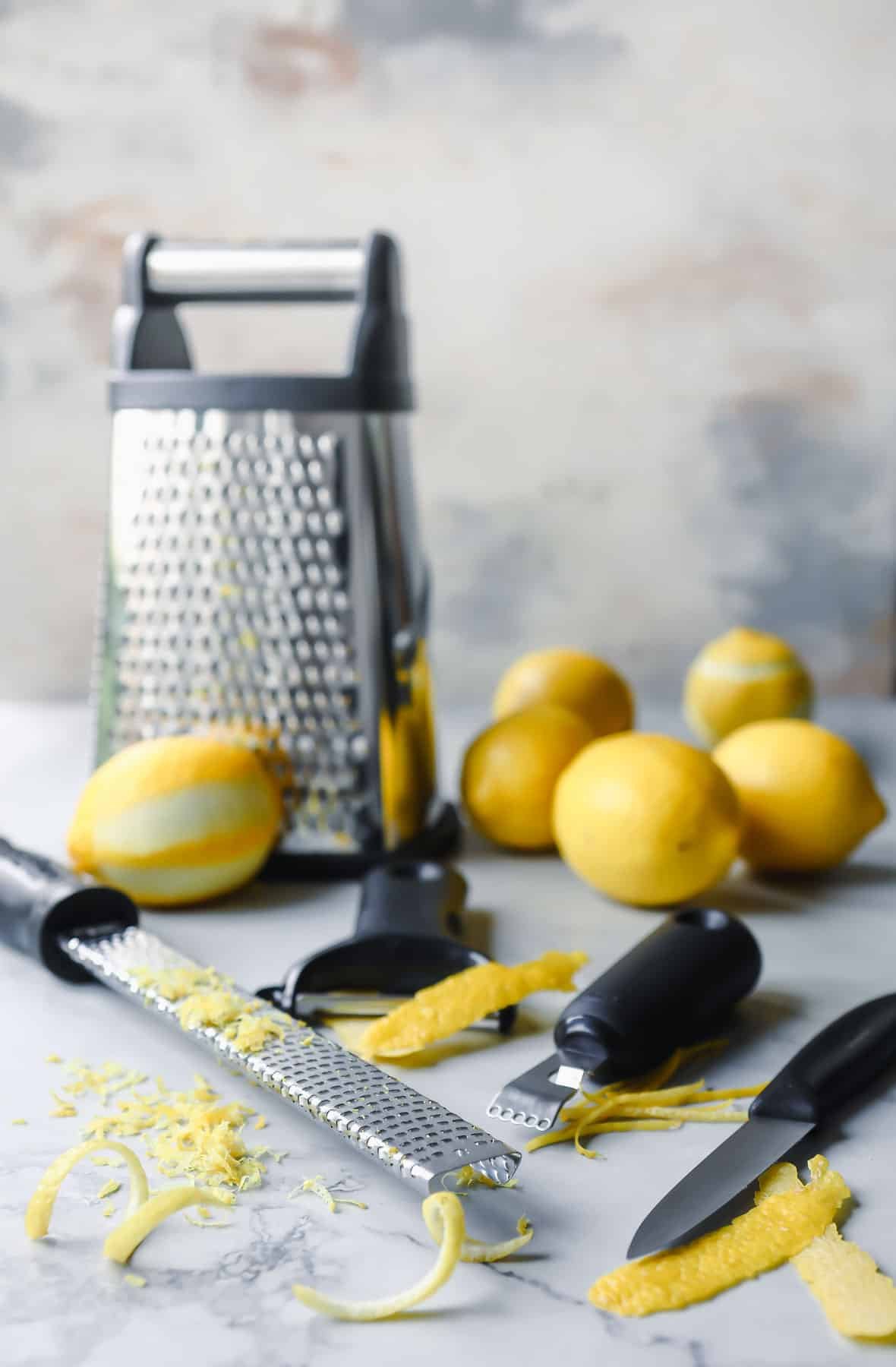
A little lemon zest, or any citrus zest, really, can do amazing things to food. If you’re making something that needs a little oomph, but you don’t quite know what, chances are a little fragrant lemon zest can rescue it from being stashed away in the fridge, never to be eaten again.
And good news! You don’t have to have the most well-stocked kitchen in the world to make lemon zest, either. There are lots of tricks to zest a lemon without a proper zester.
Table of Contents
Ingredient notes
- Lemons: Always begin by washing and drying your lemons to remove any wax coating, pesticides, or dust and debris. Scrubbing with a vegetable brush works well. No matter what technique you use, don’t dig in too deep to white part, the bitter pith of the juicy fruit. Use a light touch, focus on the rind (the yellow part), and make sure you rotate the fruit so you don’t over grate.
Do you need a zester?
There are different kinds of zest and different ways to generate them. It’s helpful to see what equipment gets the job done while considering what you may already have on hand. Before adding another tool to the drawer, consider the type of zest you need:
- Small, thin shreds: Stir into baked or salad dressings or sprinkle over roasted vegetables. Look for a rasp-style grater like a Microplane or box grater.
- Long, thin strips: Form into twists as a garnish for cocktails or decorations on cakes. A channel knife is the easiest way, but you can also trim down and thinly slice peel from a vegetable peeler or paring knife.
- Flat, wide strips: Add to cocktails as a garnish, dry and add to cups of tea, or slice into thin strips to make twists. Make these with a vegetable peeler or paring knife.
For even more information on which zesting tools to buy, if any, see my post on The Best Zesters.
Step-by-step instructions
1. To zest a lemon with a microplane:
- Hold the grater in your non-dominant hand and the lemon in the other over a cutting board or clean work surface. Going in one direction, push the lemon away from you across the rough side of the grater, removing the colorful part of the fruit, exposing the pith. Gently rotate the lemon as you go to get all of the zest you can from each fruit.
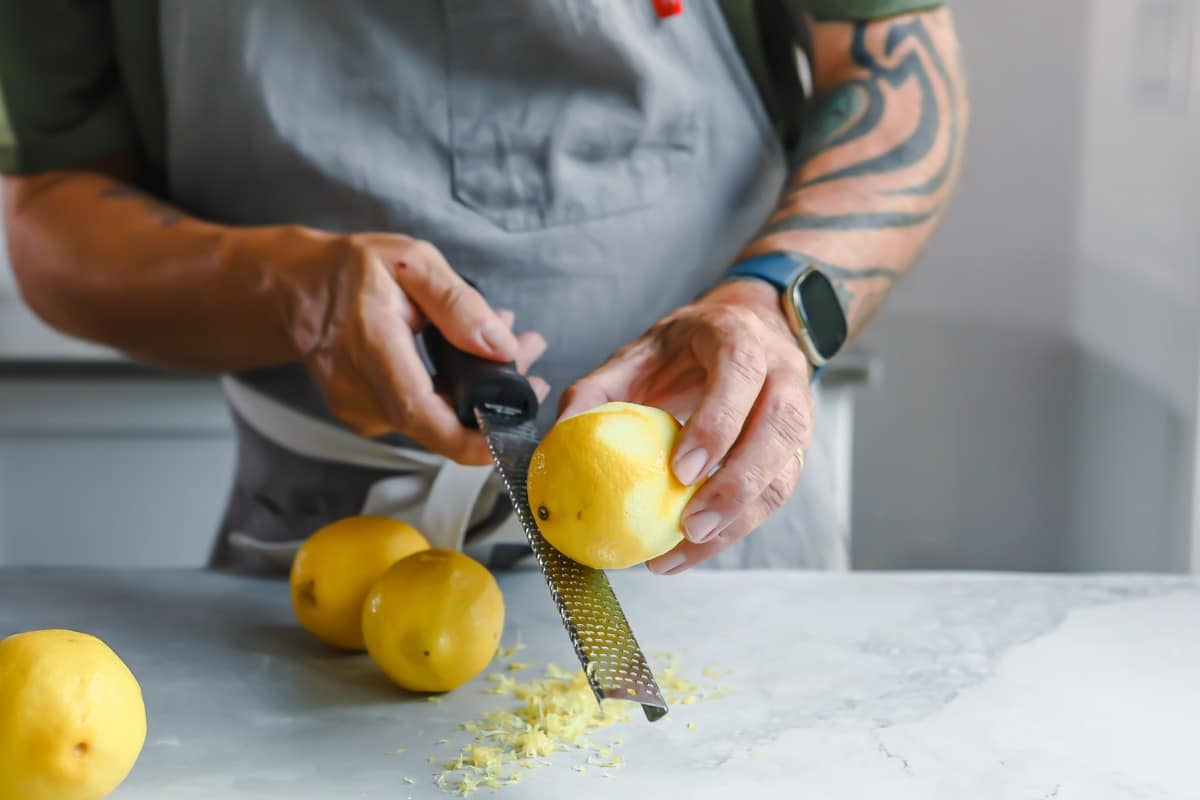
2. To zest a lemon with a vegetable peeler:
- Hold the lemon in one hand and the peeler in the other. Beginning at the top of the fruit and working your way around the lemon, use the peeler to cut into the skin and carefully remove the peel in thick, wide strips. Avoid going so deep as to remove the white pith.
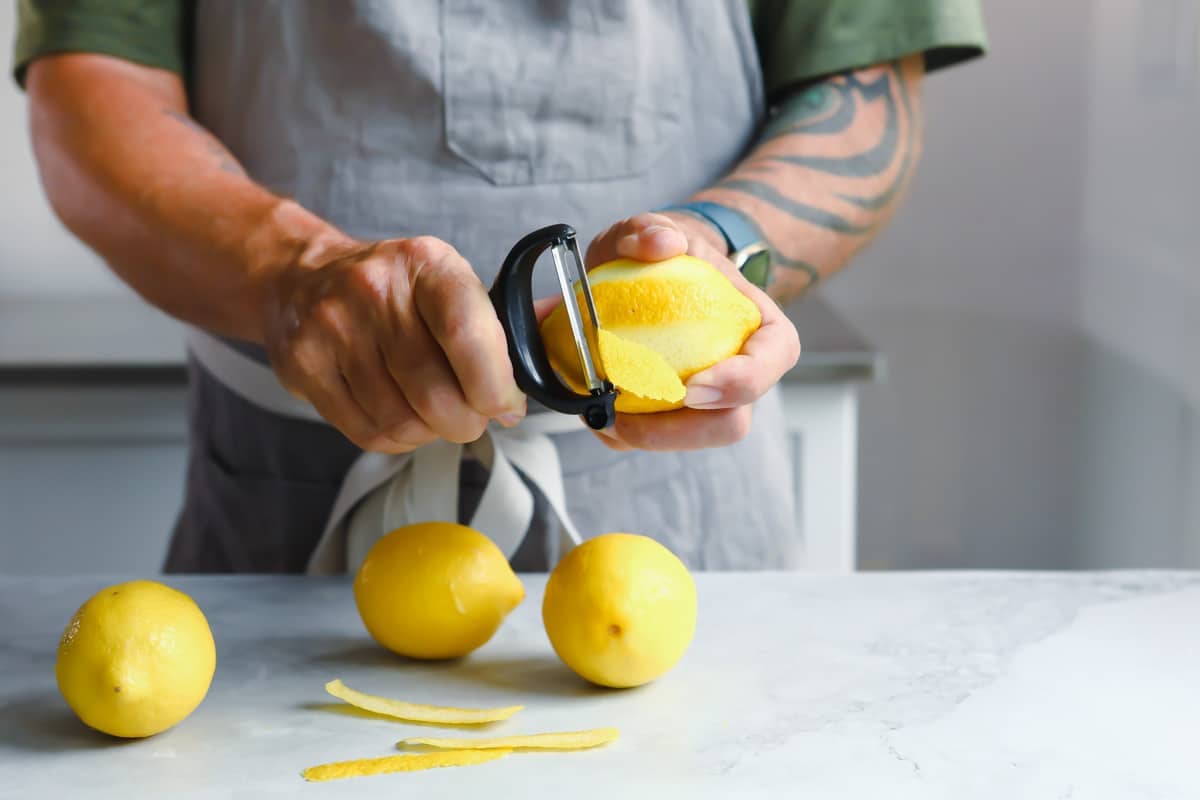
3. To zest a lemon with a paring knife:
- Hold the lemon in one hand and the knife in the other. Beginning at the top of the fruit, cut into the skin and carefully remove the peel in strips, working your way around the lemon. Stay on the outer layer and avoid going so deep as to remove the white pith. You can slice these larger strips into smaller pieces if desired.
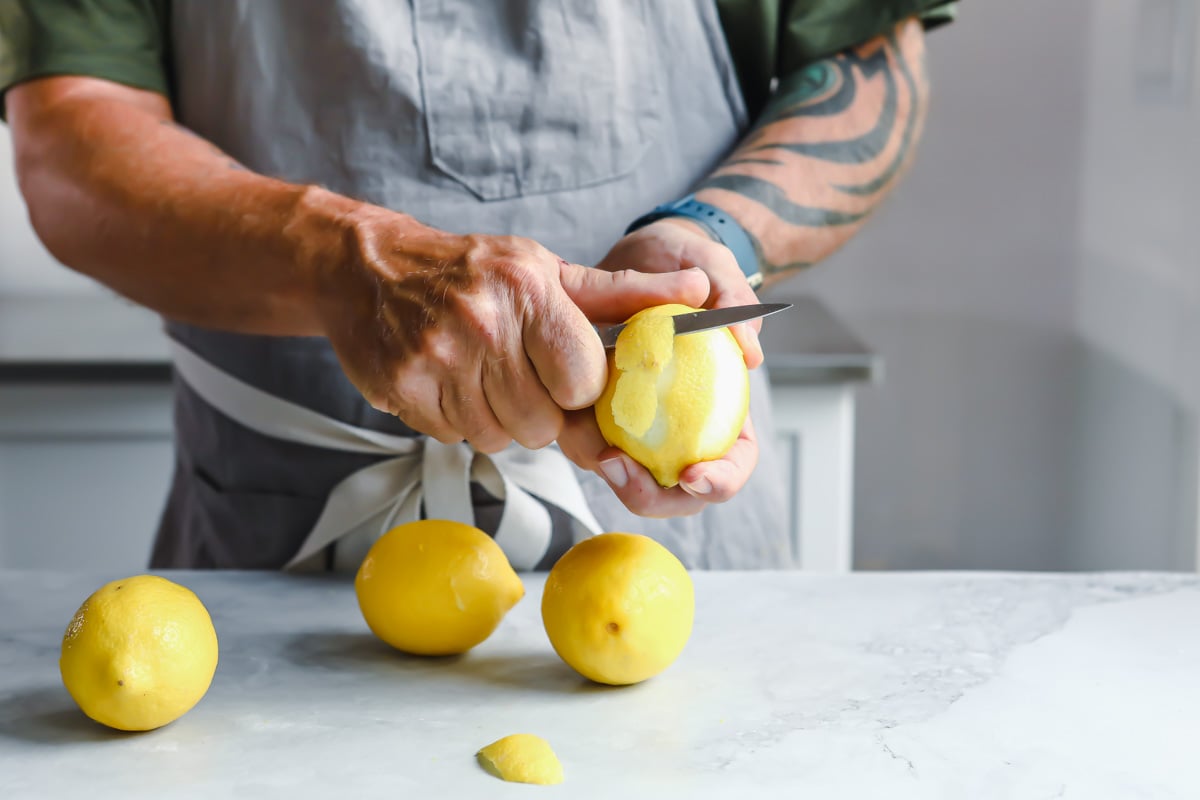
4. To zest a lemon with a box grater:
- Place the cheese grater over a cutting board or clean work surface. Holding the box grater by the handle firmly with one hand, and the lemon in the other, push the lemon away from you across the rough side of the grater, removing the colorful part of the fruit, exposing the pith. Gently rotate the lemon as you go, to get all of the zest you can from each fruit.
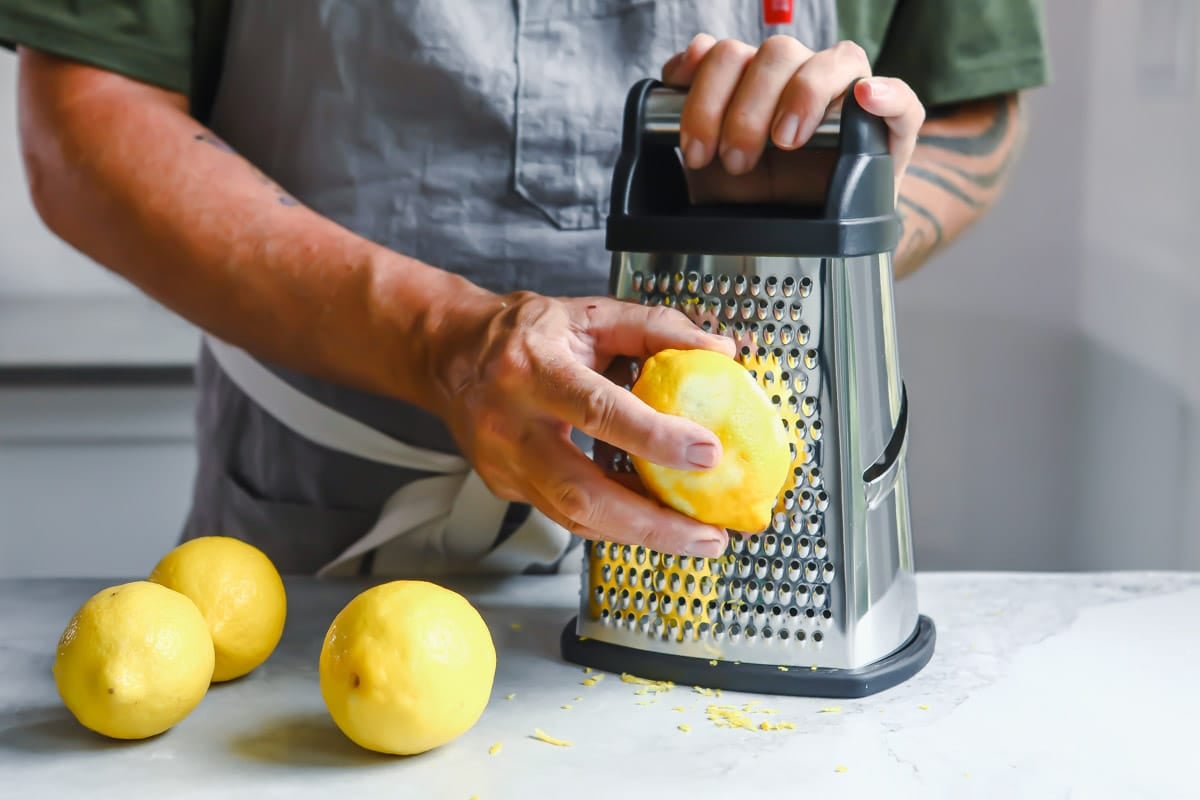
5. To zest a lemon with a zesting channel knife:
- To make zest, hold the lemon in one hand and the citrus zester in the other. Starting at the top of the lemon, press the round blades into the skin and move them across the fruit, rotating so that you get all of the zest you can.
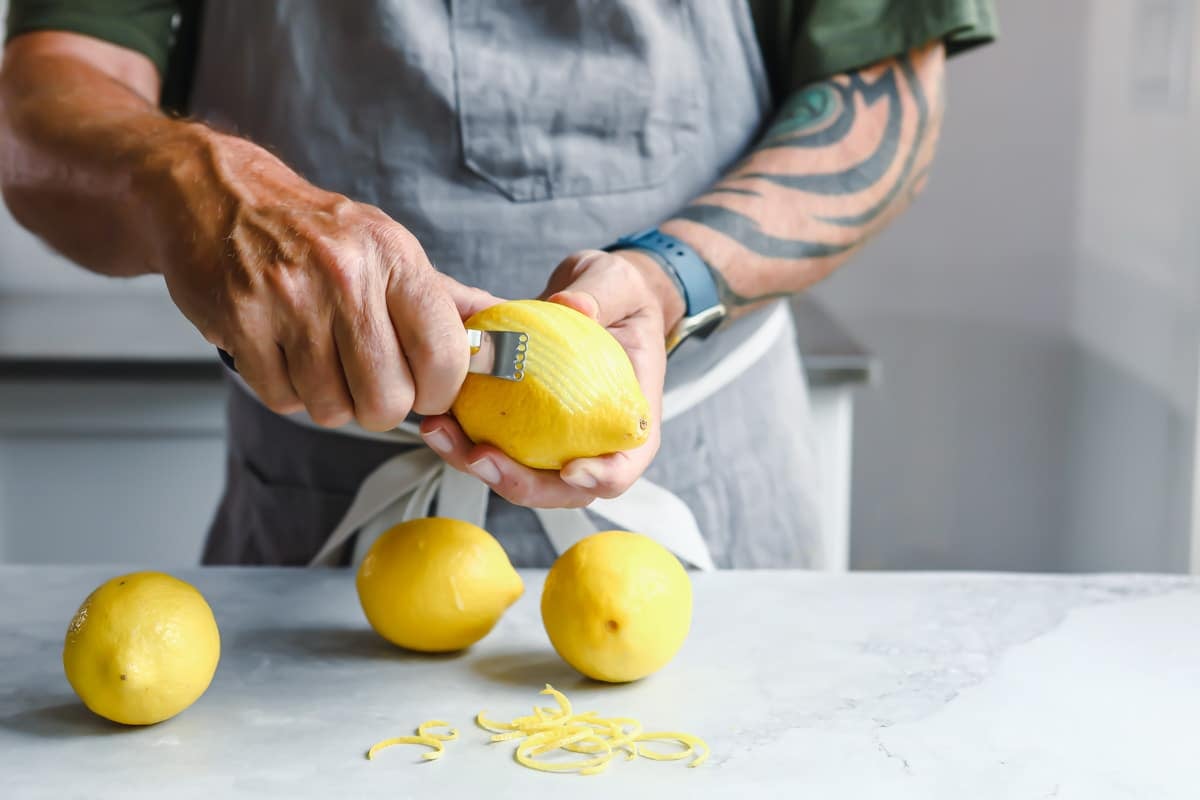
- To use a channel knife for garnishes, hold the lemon in one hand and the channel knife in the other. Dig the tip of the channel-shaped blade into the lemon at the middle, and rotate the lemon so that you make one long, narrow peel.
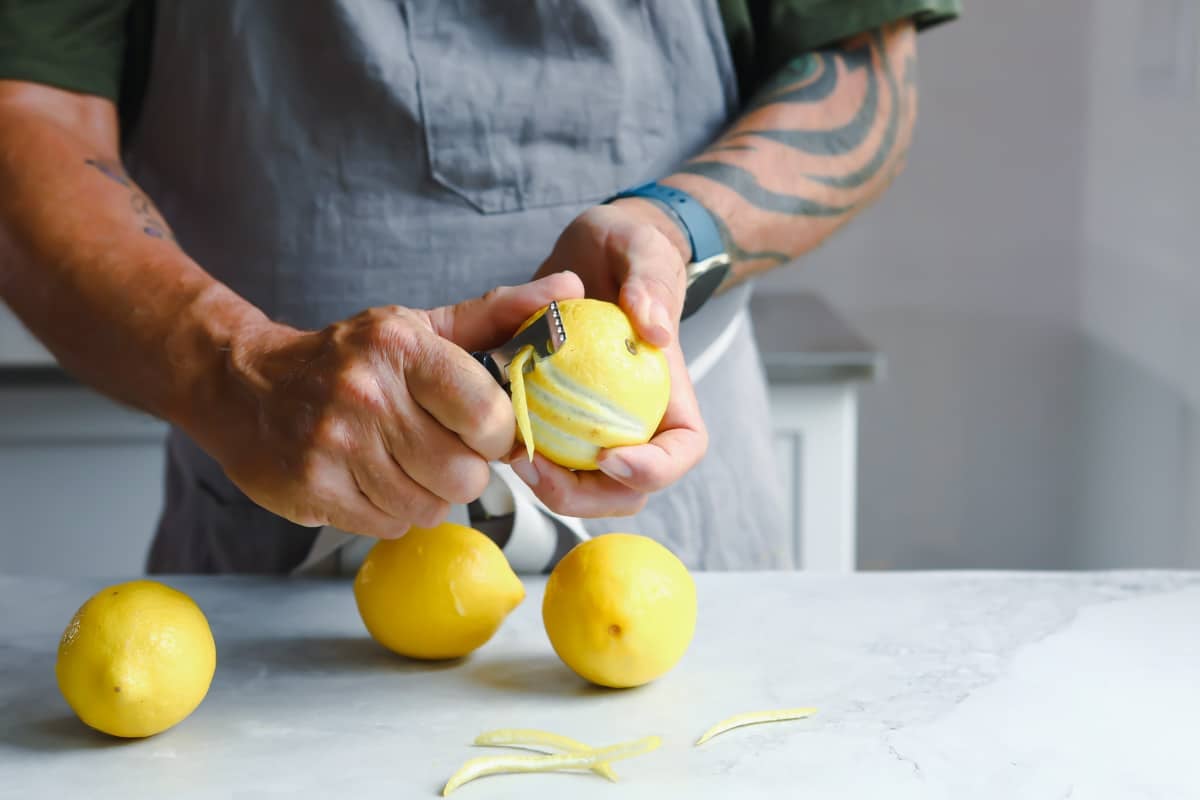
To make a lemon twist:
- Gently rotate a long strip of lemon peel around a drinking straw, securing each end with pins to hold it in place. This can be done in advance; by the time your cocktail is ready, your twist will be beautiful and perfectly curled. Just remember to give it an extra twist over the drink, to release the natural oils over the surface of the cocktail.
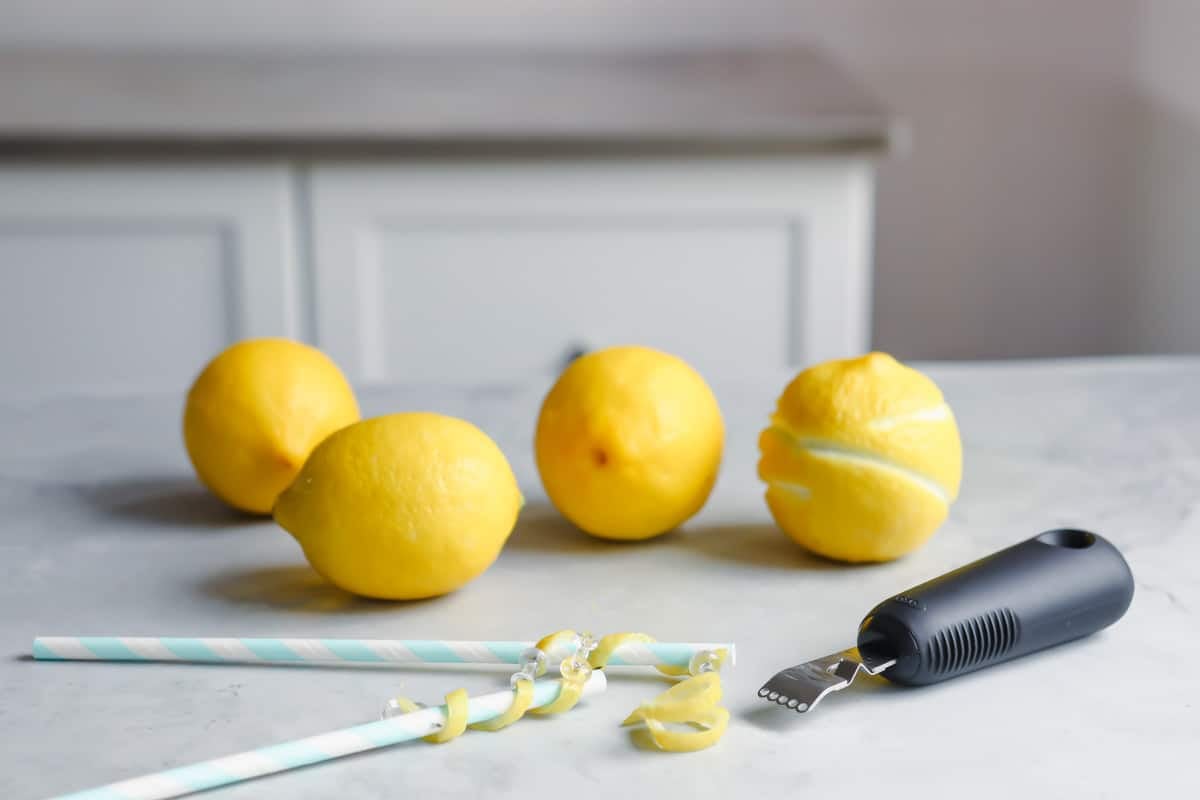
Recipe tips and variations
- Yield: 1 large lemon will yield about 1 tablespoon grated lemon zest.
- Storage: Store leftover lemon zest in an airtight container in the refrigerator for up to 4 days.
- Freezer: Add lemon zest to a freezer-safe container, label, date, and freeze up to 6 months.
- Zest before juice: When a recipe calls for both juice and zest, always zest before you squeeze because it’s much easier to hold and rotate a whole lemon.
- Lime Zest and orange zest: Follow all the same procedures to zest lemons and limes.
- Lemon butter: Stir lemon zest (and maybe garlic and fresh thyme?) into softened butter for a delicious lemon Compound Butter for Pan-Fried Tilapia, Baked Salmon, and Grilled New York Strip.
- Roasted veggies: Use lemon zest on Roasted Broccoli, Roasted Cauliflower, Roasted Asparagus, and Roasted Green Beans.
- Put your lemon zest to work: Use a tablespoon of zest in baked goods like Lemon Poppy Seed Muffins, salad dressings (Lemon Vinaigrette is bright and sunny), or as a garnish for cocktails, like homemade Margarita Salt. It’s also great in sauces like Lemon Butter Sauce which is outstanding over Pan-Seared Scallops. Or, put extra lemon zest to work in Homemade Lemon Pepper Seasoning.
- Lemon desserts: Fresh lemon zest is delicious in plenty of homemade cakes and cookies like Lemon Yogurt Cake, Lemon Cookies, and Lemon Bundt Cake.
- Leftover lemon juice: If your recipe doesn’t call for lemon juice, squeeze those lemons anyway! If needed, freeze fresh lemon juice until you’re ready to use it in future dishes. Then, make Homemade Lemonade, Lemon Rice Pilaf, Lemon Bars, Infused Water, Lemon Vinaigrette, or even homemade Limoncello.
- Preserved Lemons: These citrus pieces are pickled in a solution of salt and their own juices. You can make Preserved Lemons the classic way, through room temperature fermentation, and they will last a remarkable 18 months.
- Throat soother: Stir fresh zest into hot water with ginger and honey to soothe a sore throat.
- Happy Hour: Add a piece of lemon peel or twist to cocktails like a Greyhound, Sazerac, or Champagne Cocktail.

Frequently Asked Questions
1 large lemon will yield about 1 tablespoon grated lemon zest.
If you don’t have fresh lemons to zest on hand, lemon extract will deliver a similar flavor punch.
Citrus fruit is covered with a peel. The outer skin layer is called a flavedo. It has all the flavor, thanks to the natural citrus oils that are located just under the surface. That peel includes the inner skin layer, called an albedo, which many refer to as “pith.” The white, fleshy pith is what people usually avoid because it tastes bitter.
The difference between lemon zest and lemon peel is that zest is purely made of the very outermost layer of the citrus fruit: all flavedo (flavor) and no bitterness. Not all citrus fruits have the same ratio of pith to skin, however. For example, grapefruit tends to have thick skin with a lot of protective pith, while limes have almost no pith at all. This is an important distinction when you start zesting different fruits.
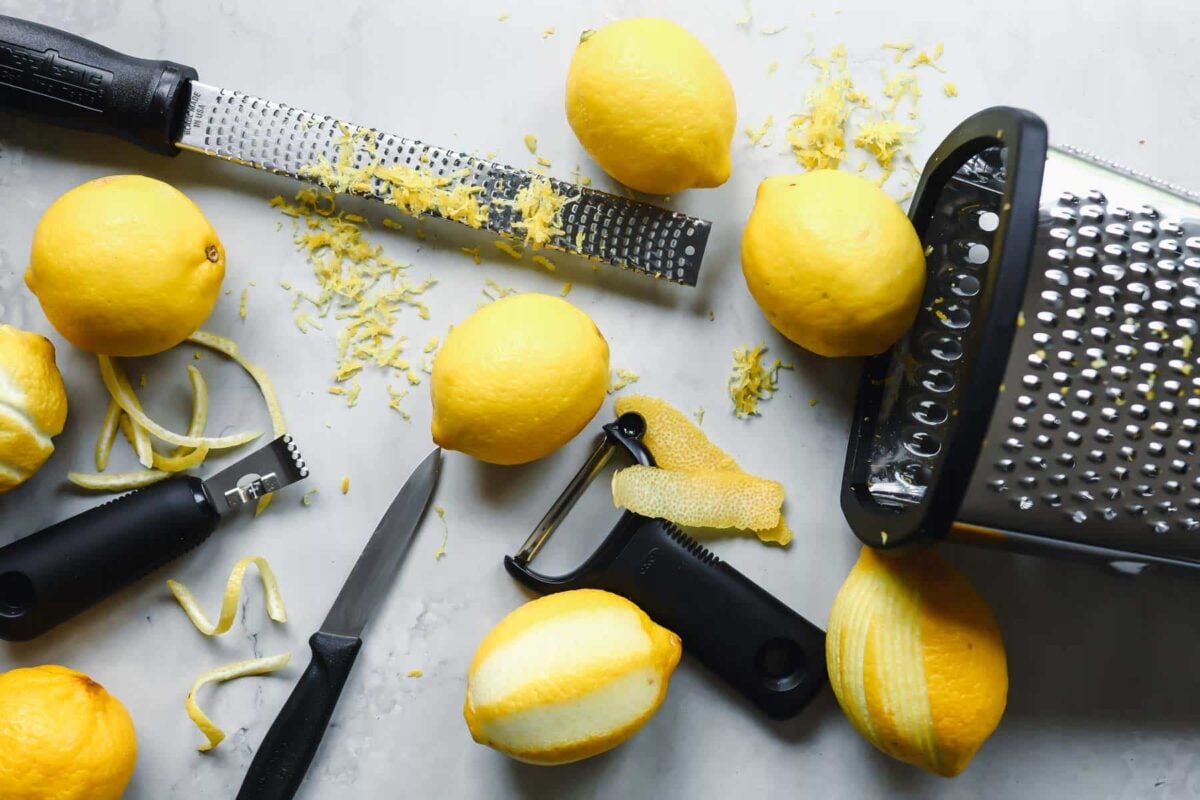
Put your lemon zest to work
30 Minute Meals
Chicken Piccata Recipe
Italian Recipes
Chicken Milanese
30 Minute Meals
Grilled Pork Chops
Salad Recipes
Orzo Pasta Salad
Join Us
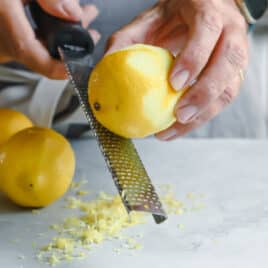
How to Zest a Lemon
Equipment
- Microplane grater (My favorite! Use this for zest, cheese, nutmeg, garlic, and chocolate)
- Vegetable peeler (My go-to peeler for thick strips of zest and for peeling potatoes or any vegetable)
- Paring knife (A super-sharp paring knife is a kitchen staple that works great for zesting citrus)
- Box grater (Use the fine-grater side for citrus and try the coarse and medium grates or slicing side for vegetables, herbs, and cheese)
- Channel knife (This 2-in-1 tool zests or makes strips for citrus garnishes)
Ingredients
- 1 lemon (see note 1)
Instructions
To zest a lemon with a microplane:
- Hold the grater in one hand and the lemon in the other over a cutting board or clean work surface. Going in one direction, push the lemon away from you across the rough side of the grater, removing the colorful part of the fruit, exposing the pith. Gently rotate the lemon as you go to get all of the zest you can from each fruit.
To zest a lemon with a vegetable peeler:
- Hold the lemon in one hand and the peeler in the other. Beginning at the top of the fruit and working your way around the lemon, use the peeler to cut into the skin and carefully remove the peel in thick, wide strips. Avoid going so deep as to remove the white pith.
To zest a lemon with a paring knife:
- Hold the lemon in one hand and the knife in the other. Beginning at the top of the fruit, cut into the skin and carefully remove the peel in strips, working your way around the lemon. Avoid going so deep as to remove the white pith.
To zest a lemon with a box grater:
- Place the grater over a cutting board or clean work surface. Holding the box grater by the handle firmly with one hand, and the lemon in the other, push the lemon away from you across the rough side of the grater, removing the colorful part of the fruit, exposing the pith. Gently rotate the lemon as you go, to get all of the zest you can from each fruit.
To zest a lemon with a zesting channel knife:
- To make zest, hold the lemon in one hand and the zester in the other. Starting at the top of the lemon, press the round blades into the skin and move them across the fruit, rotating so that you get all of the zest you can.
- To use a channel knife for garnishes, hold the lemon in one hand and the channel knife in the other. Dig the tip of the channel-shaped blade into the lemon at the middle, and rotate the lemon so that you make one long, narrow peel.
To make a lemon twist:
- Gently rotate a long strip of lemon peel around a drinking straw, securing each end with pins to hold it in place. This can be done in advance; by the time your cocktail is ready, your twist will be beautiful and perfectly curled. Just remember to give it an extra twist over the drink, to release the natural oils over the surface of the cocktail.
Recipe Video
Notes
- Lemons: Always begin by washing and drying your lemons. No matter what technique you use, don’t dig in too deep to the bitter pith or the juicy fruit. Use a light touch, and make sure you rotate the fruit so you don’t over grate.
- Yield: 1 large lemon will yield about 1 tablespoon grated lemon zest.
- Storage: Store leftover lemon zest covered in the refrigerator for up to 4 days.
Nutrition
Meggan Hill is a classically-trained chef and professional writer. Her meticulously-tested recipes and detailed tutorials bring confidence and success to home cooks everywhere. Meggan has been featured on NPR, HuffPost, FoxNews, LA Times, and more.



